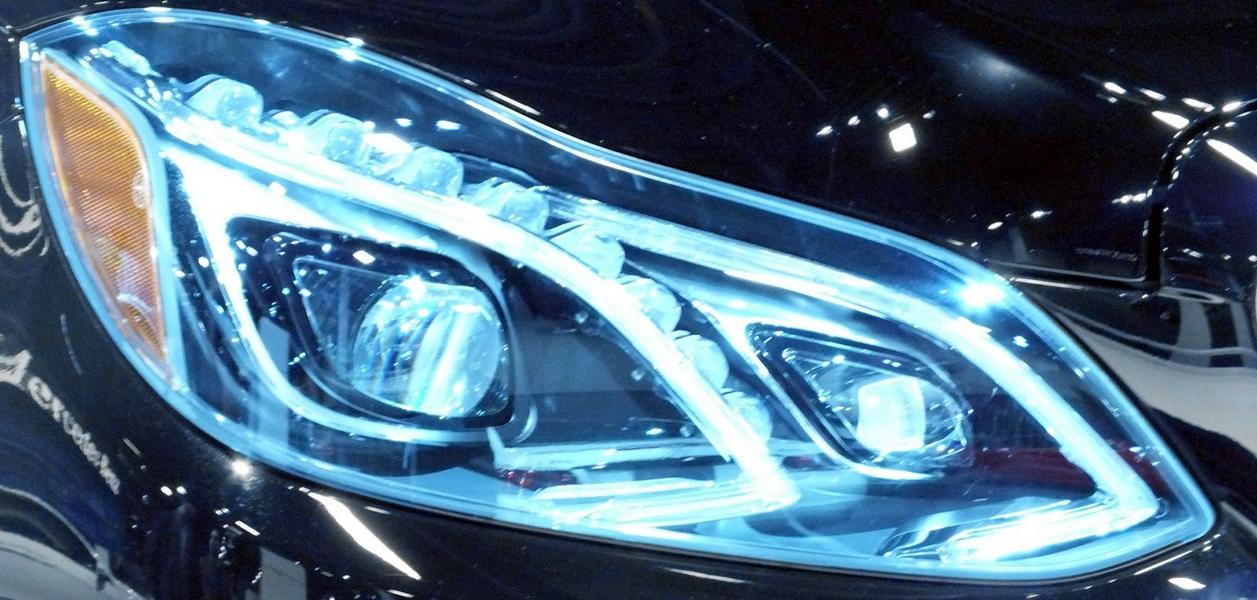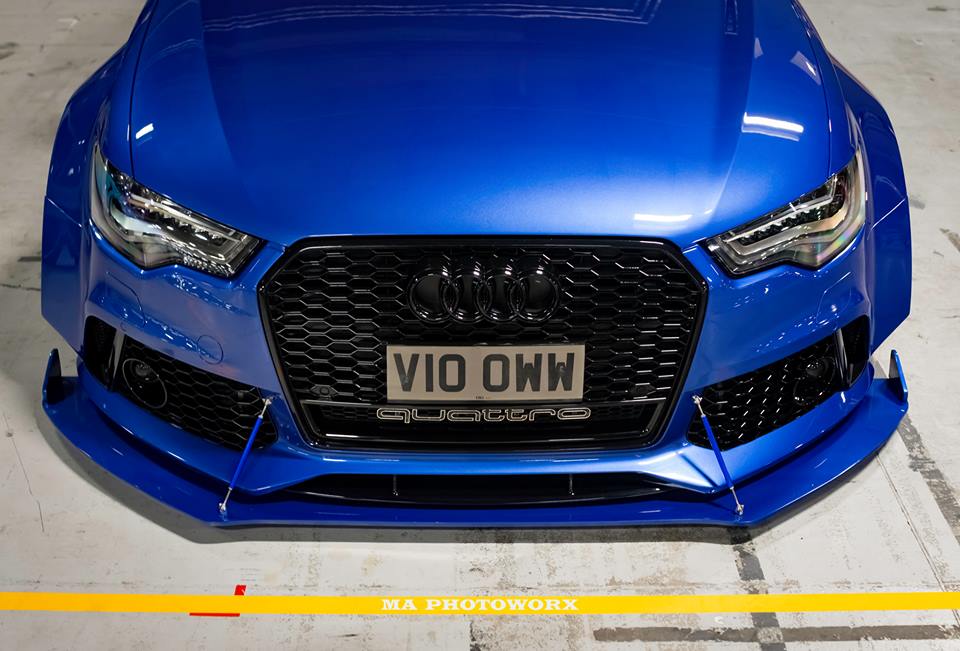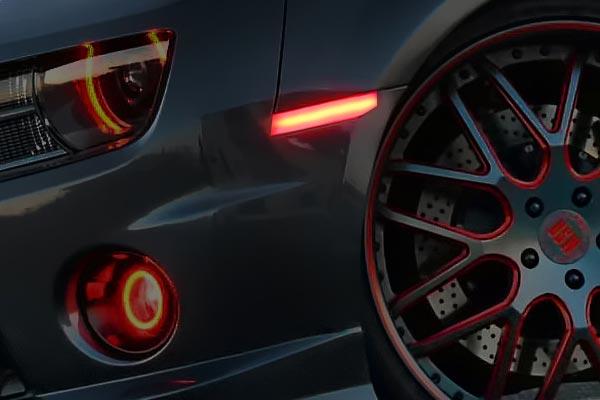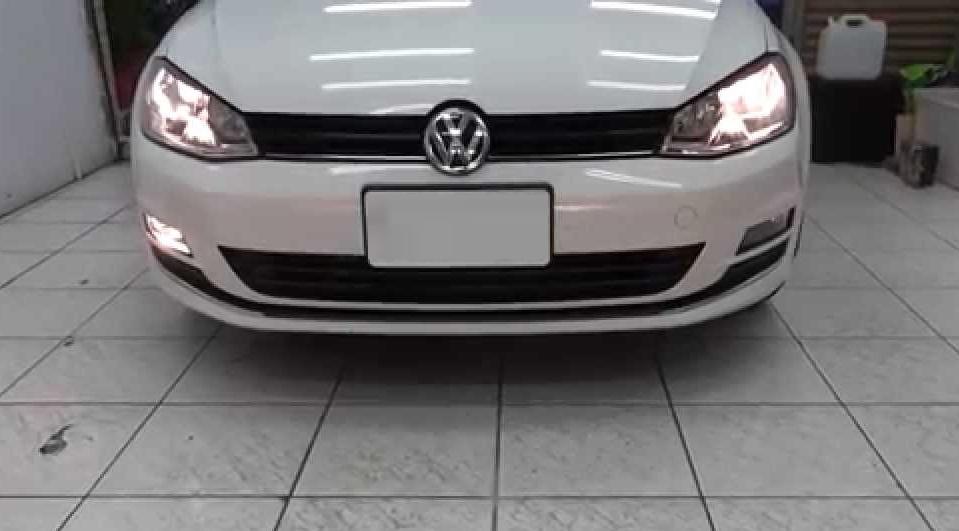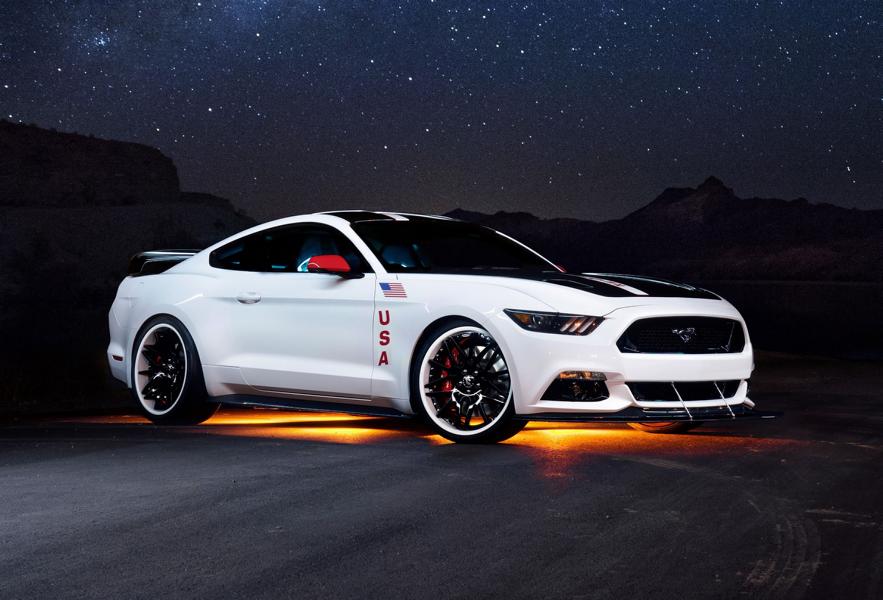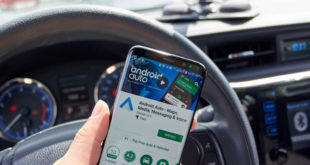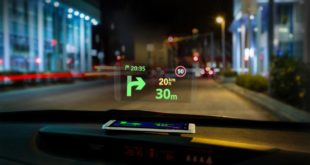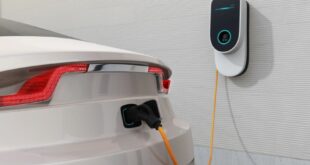Recently updated on September 15, 2023 at 08:52 am
What types of lighting are there? In which situation do I have to switch on which lights on the vehicle? What are the penalties for incorrectly switched on lighting? Many citizens are concerned with these questions. And they will now also be answered in our article. During the general inspection, defective lighting is identified as one of the most common defects. Especially with older cars, defective brake lights or a broken low beam come to light every year when the TÜV inspects them. But it is important that the vehicle owners ensure that the vehicle's lighting is intact all year round. The sooner the light is switched on on the vehicle, the better. However, not everyone knows which lights should be switched on and when. The following is an explanation of the most important lights on the car and when they should be switched on.
What kind of lights can be found on the vehicle?
| At the front of the car - Highbeam - dimmed headlights - parking lights - Sidelights - Sight light - Fog Lights |
At the back of the car - Reversing light - Sidelights - turn signal - Brake light - Tail light - License plate light |
Info - more lights - Punish - Obstructed view - Lights on the car - Symbols - What is forbidden? |
Explanations for the lighting of the vehicle
- dimmed headlights
The low beam is part of the mandatory lighting of a car. The route is illuminated with the help of the low beam. It should be switched on when visibility is poor, i.e. at dusk or in the dark. Even if, during the day, visibility is impaired by snow or rain while driving, the low beam must be switched on. The different variants of this lighting include, for example, LED, xenon, laser or halogen low beam. (Back to overview) - Highbeam
Unlike the low beam, the high beam continues to shine. It ensures that the driver of a vehicle has a better view into the distance during the dark. Switching on is only permitted if the oncoming or preceding road users are not dazzled. However, you are not obliged to use the high beam. It is used both to better illuminate the road and as a short light signal (flasher) to warn road users. (Back to overview) - daytime running lights
According to the name, this will be daytime running lights used during the day so that you can be seen better by other road users. Compared to the low beam, the daytime running lights are not directed towards the road, but towards oncoming traffic. The daytime running lights, which by the way are not found in all vehicles, only shine at the front. From 2011, only vehicles with daytime running lights may be built or newly registered in Europe. PS. We have a little guide on how to retrofit daytime running lights in our article "Retrofitting daytime running lights on the car" put together for you. (Back to overview) - Fog Lights
Even if you don't think so by the name, fog lights can also be used in heavy downpours. But fog lights can also be used to increase visibility in the event of severe obstruction, such as snowfall or fog during the day or at night. With their white or light yellow light, they can shine together with the low beam or the parking light. (Back to overview) - in Nebelschlussleuch
At the back of the car there is the red rear fog light. Compared to a normal tail light, this lighting is stronger because it is supposed to prevent rear-end collisions. The rear fog light may only be used when visibility through thick fog is less than 50 meters. In Germany, this is the distance from one delineator to another on the edge of the motorway. It is only allows the rear fog light to be switched on in fog. When the rear fog lamp is activated, the maximum speed allowed while driving is 50 kilometers per hour (Back to overview) - Hazard warning light
The road traffic regulations state that the hazard warning lights may only be switched on if the car has broken down or is being towed away. During towing, the hazard lights to use. However, the hazard warning lights may be switched on to warn other road users of an approaching traffic jam or other hazard (Back to overview) - Sidelights
To ensure that the parked vehicle is illuminated, it is recommended that the Sidelights to use. It is also known as the marker light. The parking light, which is significantly weaker compared to the low beam, should be switched on if possible outside a built-up area when there is no street lighting when the vehicle is parked. However, the parking light is sufficient when stopping and parking within a built-up area. In contrast to the daytime running lights, the parking lights also illuminate the rear of the vehicle. (Back to overview) - parking lights
If a car is parked in a town where it cannot be seen well or is poorly lit, you have to make it visible to other road users by using the parking light. This light is switched on either via the turn signal lever or an extra switch. It only shines on one side of the vehicle. (Back to overview) - Brake light
There are brake lights at the back of the vehicle. As soon as you brake, they shine red. This allows other road users to see that you are braking. According to road traffic regulations, both cars and trailers must have two brake lights. (Back to overview) - Reversing lights
The other road users can see from the reversing lights that you want to reverse with the vehicle. These shine automatically when reverse gear is engaged. However, the reversing lights cannot be switched on manually. There are vehicles with a reversing light and there are also two-sided ones. (Back to overview) - flashing lights
The Blinker is also known as a direction indicator. It can be found on the left and right of the vehicle. A change in the direction of travel is indicated by the blinker. (Back to overview) - Clearance lights
Vehicles that are more than 2,10 meters wide must be equipped with clearance lights. These include mobile homes or vans, among others. If a vehicle is 1,80 to 2,10 meters wide, it can have clearance lights, but it doesn't have to. No clearance lights may be installed on vehicles less than 1,80 meters wide. (Back to overview) - License plate lights
The license plate light According to the road traffic regulations, it must be switched on at dusk, in the dark or in poor visibility. The license plate lights must be linked to the parking lights and they are only installed at the rear. If you activate the parking lights (and also the low beam) then the license plate lighting must be active. Exception: Does the vehicle have a self-luminous license plate with ABE, then the license plate light can be deactivated. (Back to overview)
Are further lights required?
Other lights are not required on a conventional car. Any additional lighting equipment such as page marks, roof lights, Additional indicators, Search lights & Co. are either not mandatory or, if so, only on vehicles with special features. An example would be a trailer or a car (except for a car) that is longer than 6 meters. According to Paragraph 51a of the StVZO, additional, side lighting in yellow must be installed. (Back to overview)
Incorrect use of lighting - penalties:
If the lights and warning signs are not used properly, the penalties and fines are comparatively low. If you drive with the high beam despite sufficient lighting, a warning of 10 euros can be issued. If other road users are also at risk, the fine increases to 15 euros. Unknown: If the high beam is misused as a headlight flasher or the hazard warning lights, five euros must be paid. Especially with regard to the "headlight flasher", this should surprise many. However, the use of the headlight flasher is only allowed in two situations in Germany: (Back to overview)
- When you see yourself / others at risk
- For overtaking outside built-up areas
Always switch on the low beam if you have obstructed vision
If a driver is traveling with dirty or broken lighting or does not use them according to regulations, a fine of 20 euros may be due. The amount must also be paid if a stopped vehicle is not properly illuminated or the fog lights are misused. If the low-beam headlights are not used during the day despite obstruction of view due to rain, fog or snowfall outside of the village, a higher fine is incurred. In addition to a warning, you also receive a point. If an accident is triggered, there is a fine of 90 euros and one point. (Back to overview)
Where are the most important lights installed on the car?

these are the most important symbols in the vehicle
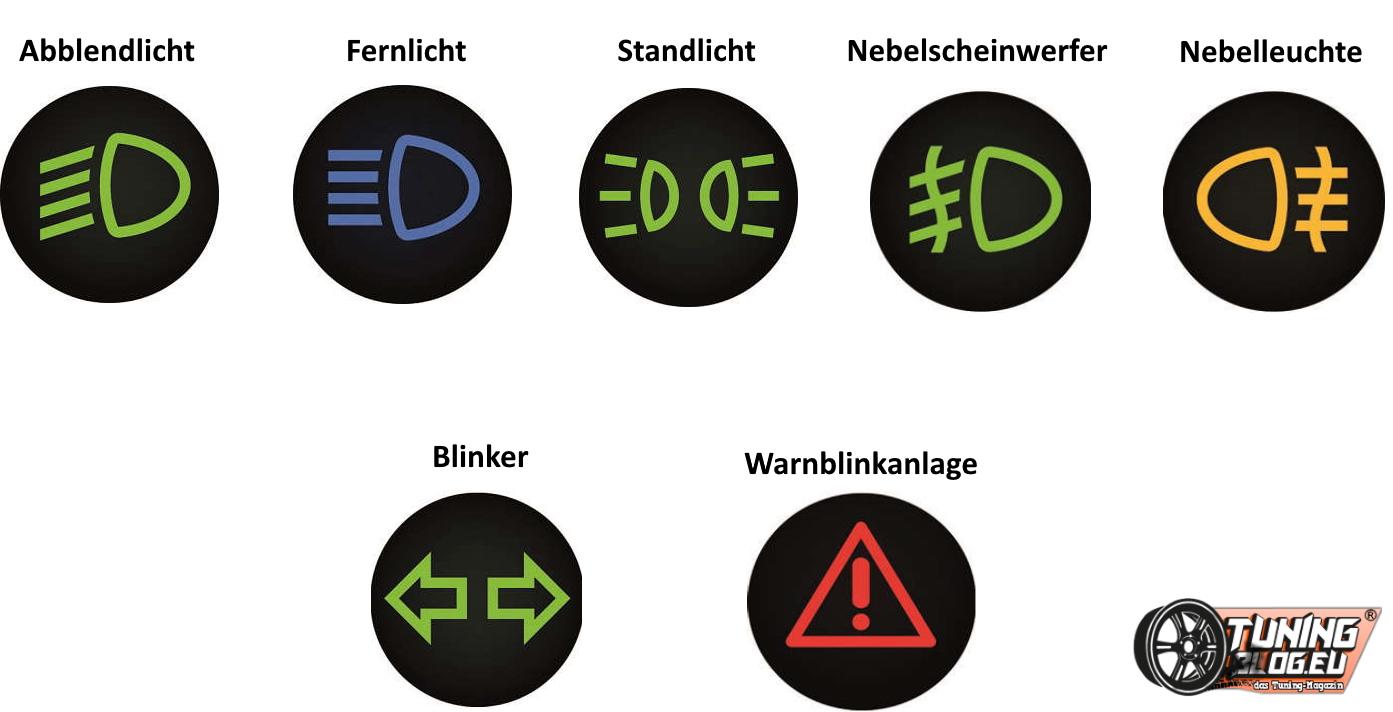
Special lighting: what is not allowed?
There are many ways to equip a vehicle with additional lighting. But not everything is allowed. The legally prescribed lighting must not be mixed up in traffic. Additional lighting like an illuminated company sign, one Unterbodenbeleuchtung, yellow lights or reflectors that act forward or name plates or symbols that are attached to the vehicle interior and that radiate outwards are prohibited. The same applies to various spotlights with green or other colored light. Infringements can result in corresponding fines. (Back to overview)
Important facts about vehicle lighting
Vehicle lighting plays a crucial role in road safety. It is not only important that the... Lights on the car are intact, but also that they are switched on in the right situation. There are different Light symbols in the car, each representing different lights. Among the common ones Car light symbols include the low beam, high beam and that Daytime running lights symbol. The daytime running lights and the low beam are particularly essential as they contribute to better visibility of the vehicle. Incorrectly used or defective items Lights on the car can lead to penalties. In addition to the basic functions, there are additional ones Lights in the car such as fog lights and tail lights, which should be used in certain situations. Therefore, it is essential to have the different Light symbols in the car to know and apply correctly in order to be safe on the road.
By the way: You can find out which penalties threaten in the event of incorrectly activated or not activated lighting in our large article onLights on the car: function, regulations, fines“Read.
Of course that had not happened yet!
tuningblog has countless other articles on the subject of car and auto tuning in stock. Do you want to see them all? Just click HERE and look around. In part, we would like to provide you with news but also off the tuning. In our category Tips, products, information & Co We have reviews of car or accessories manufacturers, new ones Tuning Wiki Terms or one or the other Leak veröffentlicht. Following an excerpt of the last articles:
"Tuningblog.eu" - we keep you up to date on the subject of car tuning and car styling with our tuning magazine and we present you the latest tuned vehicles from all over the world every day. It's best to subscribe to ours Feed and will automatically be informed as soon as there is something new about this post, and of course also to all other contributions.
 tuningblog.eu Your magazine about tuning the car
tuningblog.eu Your magazine about tuning the car
